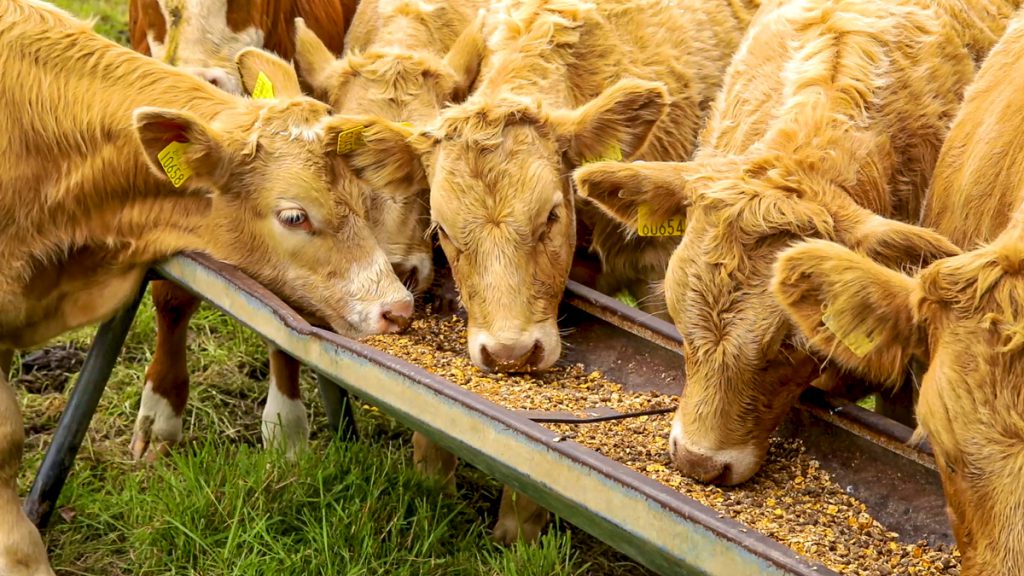The Agricultural and Horticultural Development Board (AHDB) is forecasting that UK wheat and barley stocks will remain tight, relative to envisaged demand for the remainder of 2023/2024.
One of the key factors coming into play is the year-on-year analysis in cereal yields across all of the regions of the UK.
AHDB – wheat
This season, total wheat availability is estimated at 17.358Mt. This is down 1.316Mt on the previous year, driven by a 10% decline in UK wheat production.
Availability is expected to sit more in line with 2021/2022. UK wheat production is estimated to be 1.485Mt lower year-on-year, at 14.055Mt. This is driven by a yearly fall in planted areas and yields.
While this season’s milling crop is thought to be reasonably functional, a minimal level of imports is still expected, leaving full season imports relatively unchanged on the year, forecast at 1.350Mt.
Opening stocks are estimated at 1.953Mt, 165Kt more than 2022/2023 levels, and slightly higher than the previous five-year average.
Total domestic consumption of wheat in 2023/2024 is estimated 534Kt greater than 2022/2023 levels at 15.124Mt, due to increases expected for both human and industrial (H&I), and animal feed consumption.
At 7.668Mt, H&I wheat consumption is estimated to increase 5% on the year. This is largely due to increased usage expected in bioethanol and starch production after a strong start to the season.
It is assumed both bioethanol plants will remain in operation in 2023/2024, with Vivergo Fuels parent company Associated British Foods reporting reduced losses for Vivergo at the end of the last financial year.

Total cereals demand for bioethanol usage is forecast stronger this season.
However, wheat usage may feel restricted by tighter domestic wheat availability, quiet domestic markets and premiums growing for feed wheat delivered into Yorkshire currently, according to AHDB.
Bioethanol usage in wheat
As ever, bioethanol usage remains a key watch point and will be monitored throughout the season, the board explained.
The wheat supply and demand could evolve significantly through the season if there are any changes to the RED II status of domestically produced grain.
Wheat usage by flour millers is expected to be up slightly this year. The current ‘cost of living crisis’ is impacting the use of flour in some premium products, pulling back the flour demand outlook slightly.
However, due to lower extraction rates expected this season, total wheat demand is up marginally from 2022/2023. Reports from industry suggest this season’s crop is variable, but reasonably functional.
Despite imports not pricing competitively everywhere across the UK currently, a variable and smaller domestic crop means UK flour millers are still expected to use a similar proportion of imported wheat this season in comparison to last.

Wheat usage in animal feed this season is expected to increase by 210Kt on the year to 7.119Mt.
While animal feed production is expected to remain lacklustre, and relatively unchanged on the year, cereal inclusion and the proportion of wheat in rations relative to other cereals is expected to be higher.
This is due to wheat pricing being more competitive than barley this season, though an anticipated small rise in maize usage later in the season limits further increases.
The amount of wheat fed on farm this season is forecast to be lower slightly year-on-year, with a tighter availability.
Input costs are expected to fall for livestock and poultry producers, although as it stands, significant demand rebounds are unlikely but will remain closely monitored.
The balance of supply and demand is estimated at 2.234Mt for the 2023/2024 season, down 1.850Mt from levels recorded last year.
The smaller balance is due to the reduction in supply outweighing the rise in demand.
Taking into account an operating stock requirement of 1.500Mt (unchanged from 2022/2023), this leaves a surplus available for either export or free stock of 734Kt, down 1.304Mt on the year.
AHDB – barley
Total availability of barley is estimated at 8.336Mt this season (2023/2024), down 101Kt from last season, with a smaller crop outweighing a rise in opening stocks, according to AHDB.
Despite an estimated increase in UK barley area this season, below average yields see UK barley production provisionally estimated at 6.981Mt, down 404Kt on a year earlier levels.
At 1.268Mt, opening stocks are 305Kt higher year-on-year, and above the previous five-year average.

Domestic consumption of barley in 2023/2024 is estimated 120Kt lower than 2022/2023 levels, at 6.021Mt.
This is due to a fall in usage in animal feed, outweighing a slight rise in demand from the brewing, malting, and distilling (BMD) sector.
For this season, H&I barley usage is estimated at 1.991Mt, up 11Kt on the year from last season’s high.
Despite expectations that the cost-of-living crisis will hit brewing demand, usage by the BMD sector is forecast to be up on the year, with demand for distilling expected to remain robust from increased capacity coming online last season.
If realised, this H&I usage would be the new highest figure since the 1990s. Usage of barley in animal feed is forecast to decline on the year by 129Kt, to 3.814Mt.
Wheat and maize are expected to price more competitively than barley this season, meaning barley inclusions in feed rations have been reduced.
The barley balance is forecast at 2.316Mt, up 19Kt from last season, and above the previous five-year average.
At 800Kt, the operating stock requirement remains unchanged on the year, which leaves a surplus available for export or free stock of 1.516Mt, down 88Kt from the 2022/2023 season.

